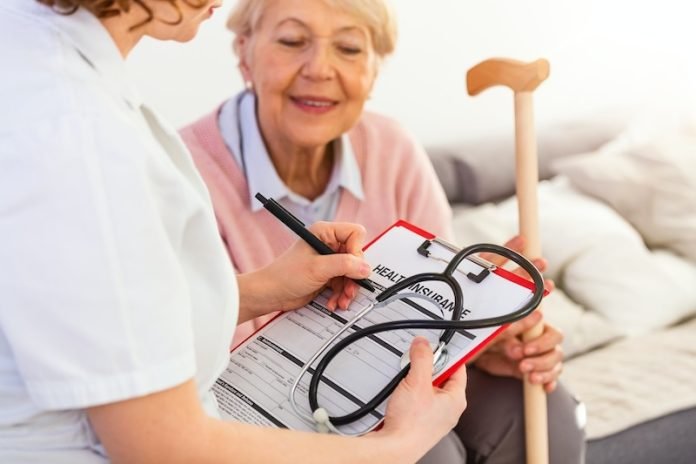
High blood pressure, also known as hypertension, affects a significant portion of adults in the United States, with potentially severe health consequences if left untreated.
Older adults are especially vulnerable to the adverse effects of hypertension, which can lead to heart attacks, strokes, and kidney problems.
Despite the proven benefits of effective blood pressure control in older individuals, a new study reveals that fewer than 30% of those who need intensive treatment for high blood pressure are receiving it. This alarming public health gap demands attention and intervention.
High blood pressure is a condition where the force of blood against the artery walls is consistently too high.
The most recent hypertension care guidelines from the American College of Cardiology and American Heart Association lowered the threshold for defining high blood pressure to a reading of 130 mmHg or higher for systolic blood pressure (the top number) and 80 mmHg or higher for diastolic blood pressure (the bottom number).
This change means that more individuals are now classified as having high blood pressure and require treatment.
The study, conducted by researchers at Beth Israel Deaconess Medical Center, analyzed a decade of national data from adults aged 60 and older who had been diagnosed with high blood pressure and visited their primary care providers.
The research focused on identifying patients who received “appropriate antihypertensive intensification,” which involves adding an antihypertensive drug to their treatment plan.
The study revealed that, based on office blood pressure measurements, up to 7,404 primary care visits between 2008 and 2018 warranted treatment intensification, reflecting a potential 293 million visits nationwide.
However, the percentage of patients receiving appropriate intensification of treatment never exceeded 27.5% based on the most liberal criteria, which considered patients who weren’t previously taking medications for high blood pressure. For patients already on hypertension drugs, only 15.3% received appropriate intensification.
Furthermore, the study found that under all three sets of published blood pressure targets, the percentage of patients receiving appropriate treatment intensification declined over the study period.
The researchers attributed this decline to concerns among doctors that blood pressure-lowering drugs might lead to falls in older adults and patients’ reluctance to add more medications due to potential side effects.
Managing high blood pressure in a typical 15-minute primary care visit can be challenging, as providers must also address cholesterol levels, diet, weight, and increased documentation requirements.
Future studies are needed to determine effective strategies to motivate doctors to treat high blood pressure more aggressively in older adults. One potential strategy is adjusting medical record systems to automatically alert doctors when a patient’s blood pressure exceeds the desired target.
In conclusion, the study underscores the critical need to address the gap in providing intensive blood pressure treatment to older adults at risk of hypertension-related health issues.
Effective management of high blood pressure is essential in improving the health and well-being of older individuals and reducing their risk of serious medical conditions.
This study was conducted by Dr. Nicholas Chiu and published in the AHA journal Hypertension.
If you care about high blood pressure, please read studies that early time-restricted eating could help improve blood pressure, and natural coconut sugar could help reduce blood pressure and artery stiffness.
For more information about blood pressure, please see recent studies about added sugar in your diet linked to higher blood pressure, and results showing vitamin D could improve blood pressure in people with diabetes.
Copyright © 2023 Knowridge Science Report. All rights reserved.



